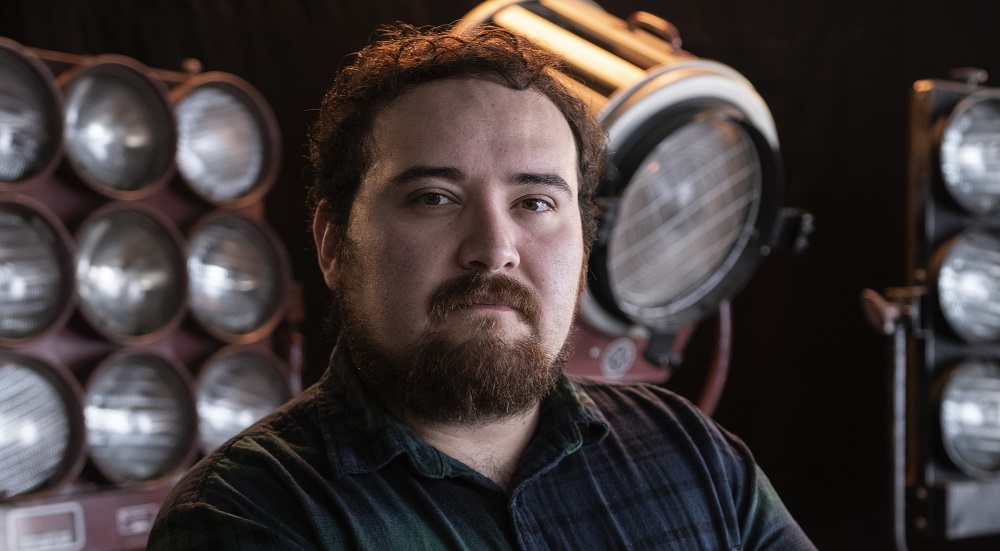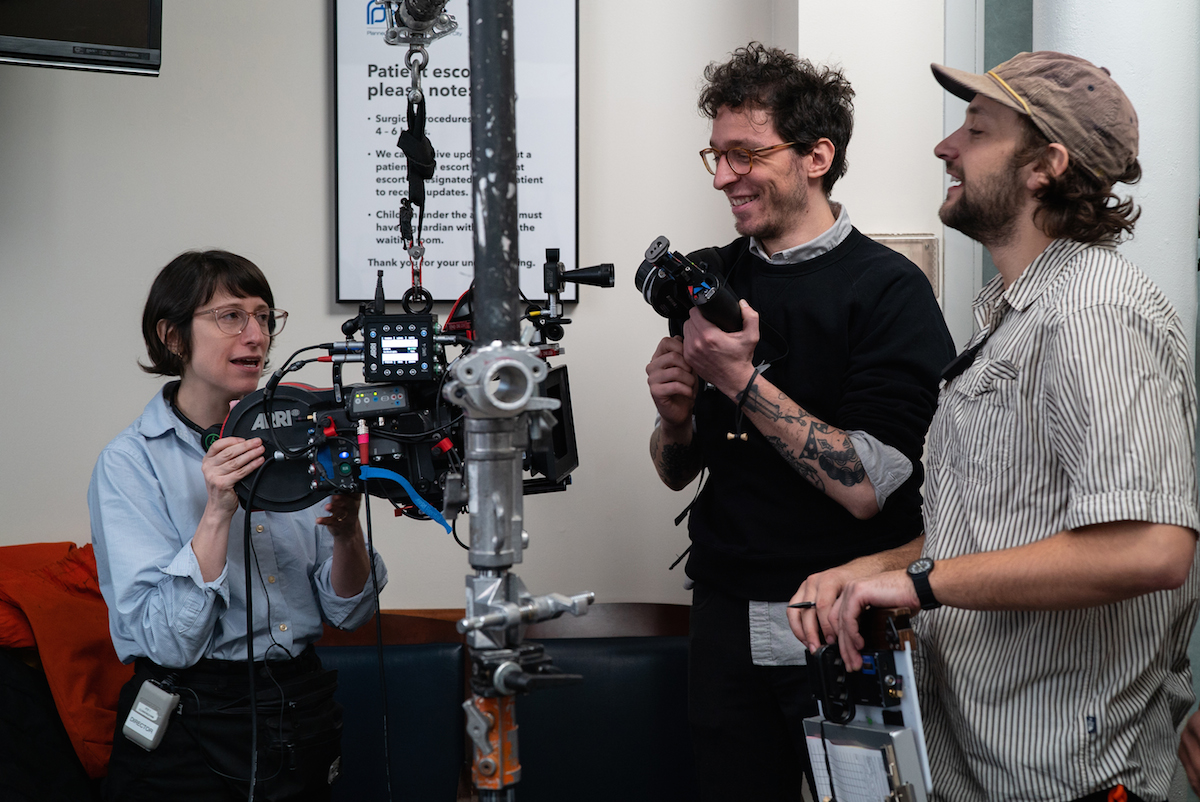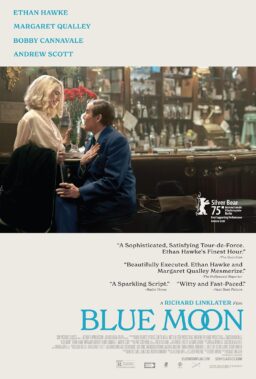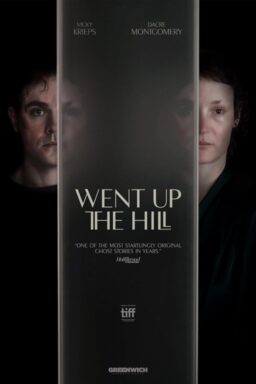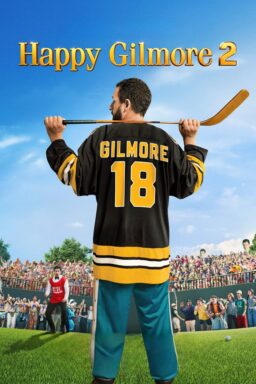Upon learning that in the state of Pennsylvania parental consent is required for an underage girl to have an abortion, 17-year-old Autumn (Sidney Flanigan) sets out to resolve her unwanted pregnancy elsewhere with the unconditional support of her cousin Skylar (Talia Ryder) in Eliza Hittman’s strikingly subdued “Never Rarely Sometimes Always.” Deftly humanistic, not unlike the director’s previous efforts, the drama manifests the internal state of a teenage character non-verbally. In Flanigan, she procured a performer with a reserved sensitivity that responds to the situations presented to her with devastatingly honest behavior.
A restrained knockout with potential for real-world impact, Hittman’s latest avoids the trappings of controversy and is all the more successful in addressing the issue for that. Buzzing from the praiseful Sundance reception, Hittman told RogerEbert.com about what drew her to the multiple-choice title, the motivations behind specific narrative decisions, and her hopes for the film now working with a larger distributor.
What was it about this multiple-choice questionnaire that gives title to the film that enticed you to use it as a narrative device? Or was this just an element of this process for any women in Autumn’s situation that you wanted to bring in to the forefront?
It was part of the research that I did when I was developing the script. I spent a lot of time in clinics talking to social workers, and it is true to the experience of going in and being counseled before an abortion, clinicians, and social workers wanting to know the nature of the pregnancy. For me “Never Rarely Sometimes Always” is a narrative about a girl carrying around a lot of pain and burden, and the loneliness of it. I felt like the story was building to an emotional turning point, as she’s about to begin this procedure, which is an intimidating thing. It just stuck with me while I was doing my research. They ask these questions. It’s on the form, as a way to open up a dialogue about someone’s safety. All of them are questions that women answer throughout their lives. These are not questions that men ever get asked, so it was important for them to be said out loud.
At what point did you decide to not touch upon the nature of the pregnancy itself, or finding out what happened to her, and just focusing on the road to the solution that works for her to continue her life?
Always. I never wanted it to be a story about a girl and her boyfriend. For me it’s very slice of life. The story begins where it begins, she’s been pregnant for a few months, and it felt like it was in the background. It was something that we were going to slowly tease the audience with. I wanted to create more of a mystery than to give concrete answers. Ultimately I didn’t want the audience to judge or have a decision about this person and this pregnancy. It’s no one’s business but hers.
There’s great specificity to how the medical professionals detail the processes and steps that must take place before she can undergo the procedure. How did you embed so much factual information into a character-driven narrative?
It was a challenge, because it’s not a documentary, and it’s not procedural narrative. It really is about her subjective experience, so I tried to mine and find out as much information as I could, but then really tell the experience from her point of view. So we’re not seeing the whole experience, we’re seeing the moments of the experience that affect her the greatest.
Her cousin serves as an emotional support throughout the ordeal. Did you ever contemplate a different iteration of the story in which she goes through this alone?
Yeah, I explored, in treatment form, versions where she was alone, and it wasn’t as dynamic of a story. And from my own experience, I’d gone with friends to get abortions, and a friend is much safer than anybody else in that situation.
You’re fantastic at writing dialogue for teenagers, which doesn’t ring forced. Do you write each line with precision so that they feel organic or do they come from an exploration with the actors or improvisation?
Not improvised. The only dialogue that’s improvised in the film is at the very end when they’re sitting in the bakery and they start talking about how greasy the food is. That’s just them being them in that moment, but the rest of it is constructed. I don’t know if the dialogue sounds conversationally real. It’s definitely a style that I’ve developed to write dialogue. I don’t know if anyone would ever call it [sic] real.
And does it have to do with the fact that your characters, being teenagers, are so…?
Inarticulate? Yeah, in another, more commercial version movie about a pregnant teen who gets an abortion, she’d be much more verbally precocious. In the world we live in, we’re not given the tools to talk about these issues. That’s in all my films, the feeling of uneasiness in discussing things like sexuality and pregnancy.
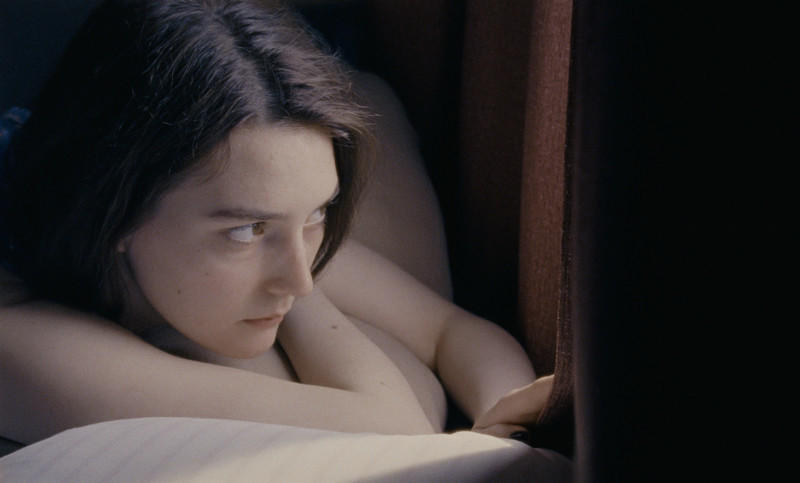
Are you attracted to teenager characters because they’re in a transitional point in their lives and thus conflict comes built-in?
Yeah, it’s a transitional point, but it’s like a moment of disillusionment, more than transformation. The issues that you encounter during those years can leave scars that you carry with you for the rest of your life.
How did Sidney Flanigan, who plays your protagonist, come into radar and what were the qualities you saw in her as potentially compelling for the film?
It’s a long story, but the short story is that I met her producing another film called “Buffalo Juggalos,” which is an experimental documentary that my editor and my partner directed in 2012. I met her at a backyard wedding, and she had a very quiet tension, just sitting off to the side, a little bit younger than everyone there. She was on the edges of this other movie that was being made, and we added her on Facebook, and we just both thought she was really intriguing.
And how do take someone you met at a party with no acting experience to star in a feature?
It took a lot of arm-twisting. She was like, “Acting?” Never in her mind was this something she would want to pursue. She’s always been focused on music. Her musical talent was always in the film, but she had very strong feelings about what she would cover, what she would sing.
There’s also a visual contrast between this and “Beach Rats,” even just in that one takes place in cold weather and the other one’s in the heat of summer.
I was trying to work in a different landscape, just because I had made two movies in the summer, just trying to do, feel something different on screen. But I also felt like it needed to be a winter film. If it were a summer film, they would be hanging out in Washington Square Park. It was all about the weather being another obstacle.
How did that change the conversion with the cinematographer on how the film would be shot?
I was hoping it would be colder and snowier, and it actually wasn’t. The movie is a little bit of a testament to global warming, because every day it’s another season, and there was no weather continuity to the film. It was a challenge.
Tell me about the men the two characters encounter along the way, their unacceptable behavior is very real, but some might find it uncomfortable to confront.
When you turn 12 or 13, you begin to realize as a woman that there’s an uneasiness to the environment. There are just different ways in which you experience predatory behavior, and the film is an exploration of smaller moments and larger moments, but they’re true moments that we’ve all encountered, and contend with on a regular basis.
This film is being released by Focus Features, which is a larger distributor than the ones you’ve worked in the past. Because of the importance of the subject matter, do you hope this helps it get a wider audience?
That’s the hope. It’s obviously an unconventional title for them to acquire, but they’re really excited about the film and the strength of the reviews that have come in. We’re sort of in a conversion at the moment about what the rollout strategy is, but my hope is that as many people see this film as possible.
Header caption: Director Eliza Hittman with 2nd AC Mo Shane and 1st AC Davide Sorasio on the set of her film NEVER RARELY SOMETIMES ALWAYS, a Focus Features release. Credit: Angal Field/Focus Features
